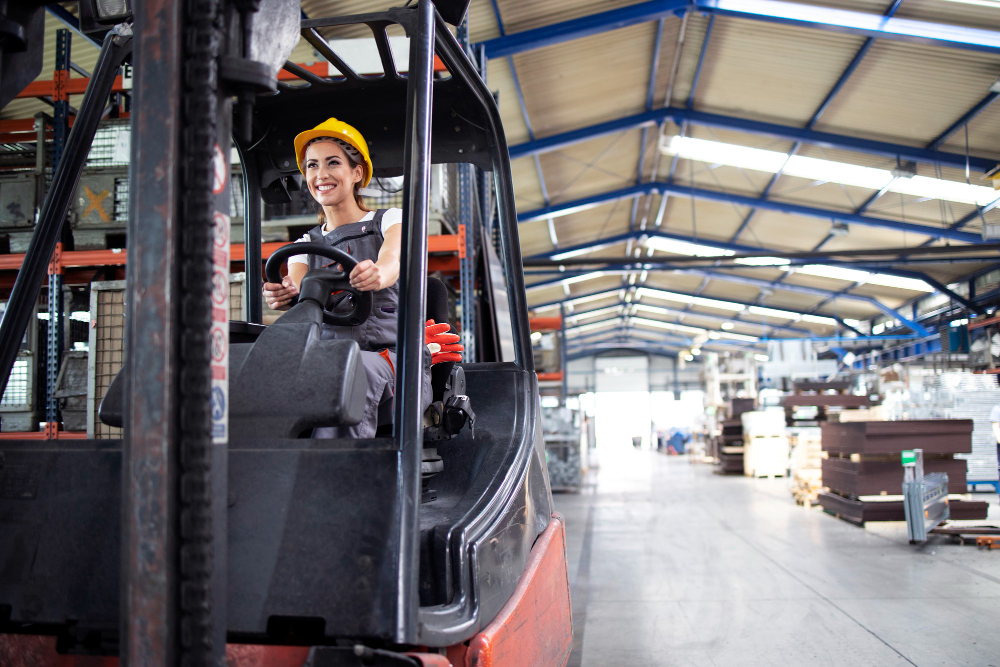As a business owner or warehouse manager, you’re constantly looking for ways to improve efficiency, safety, and productivity in your operations. One of the most important decisions you’ll make in this regard is whether to invest in a new forklift or continue using your existing one. This article will explore the many benefits of investing in a brand-new forklift, including increased efficiency, enhanced safety features, a longer lifespan, lower maintenance costs, and access to the latest technology. We’ll also discuss how to determine when it’s time to replace your current forklift and how a new forklift can contribute to your overall business success.
Increased Efficiency and Productivity
One of the main benefits of investing in a new forklift is the potential for increased efficiency and productivity in your warehouse or facility. Newer forklift models are designed with advanced features and capabilities that can help you move materials more quickly, accurately, and safely. Some of these features include:
Improved ergonomics: New forklifts are designed with the operator’s comfort and efficiency in mind. This means better visibility, more comfortable seating, and easier-to-use controls, all of which can contribute to increased productivity.
Greater lifting capacity: New forklifts often have higher lifting capacities than older models, allowing you to move more materials at once and reduce the number of trips needed to complete a task.
Faster travel speeds: Newer forklifts are typically faster than older models, which can help you complete tasks more quickly and efficiently.
Better fuel efficiency: New forklifts are often more fuel-efficient than older models, which can help you save on fuel costs and reduce your environmental impact.
Enhanced Safety Features
Safety is a critical concern in any warehouse or facility, and investing in a new forklift can help you ensure that your operations are as safe as possible. Newer forklift models come equipped with a variety of advanced safety features, including:
Advanced warning systems: Many new forklifts are equipped with warning systems that alert operators to potential hazards, such as obstacles, other workers, or uneven surfaces.
Improved stability: New forklifts are designed with enhanced stability features, which can help reduce the risk of tip-overs and other accidents.
Better visibility: New forklifts often have larger windows and better lighting, which can help operators see more clearly and avoid accidents.
Operator training tools: Some new forklifts come with built-in training tools that can help operators improve their skills and reduce the risk of accidents.
Longer Lifespan and Lower Maintenance Costs
Investing in a new forklift can also help you save on maintenance costs over time. Newer forklifts are typically more reliable and require less frequent repairs than older models, which can help you reduce your overall maintenance expenses. Additionally, new forklifts often come with longer warranties and better support from manufacturers, which can provide additional peace of mind and protection for your investment.
A new forklift is also likely to have a longer lifespan than an older model, which means you’ll get more use out of your investment before needing to replace it. This can help you save on the cost of purchasing new equipment in the long run.
Access to the Latest Technology
Investing in a new forklift can also give you access to the latest technology and innovations in the industry. This can help you stay ahead of your competitors and ensure that your operations are as efficient and effective as possible. Some of the latest technological advancements in forklifts include:
Automated guidance systems: These systems can help operators navigate more efficiently and accurately, reducing the risk of accidents and improving productivity.
Remote monitoring and diagnostics: Many new forklifts come with built-in monitoring systems that can help you track performance, identify potential issues, and schedule maintenance more effectively.
Energy-efficient power sources: Newer forklift models are often available with more energy-efficient power sources, such as electric or hydrogen fuel cells, which can help you save on fuel costs and reduce your environmental impact.
When to Replace Your Current Forklift
Knowing when to replace your current forklift can be a challenge, but there are several factors to consider that can help you make an informed decision. These factors include:
Age: If your forklift is more than 10 years old, it may be time to consider investing in a new model. Older forklifts are more likely to break down and require costly repairs, and they may not have the advanced features and capabilities of newer models.
Maintenance costs: If you’re spending a significant amount of money on repairs and maintenance for your current forklift, it may be more cost-effective to invest in a new model.
Performance issues: If your current forklift is struggling to keep up with your operational needs, it may be time to upgrade to a newer, more capable model.
Safety concerns: If your current forklift lacks important safety features or has been involved in multiple accidents, it may be time to invest in a new model with enhanced safety features.
Conclusion
In conclusion, investing in a new forklift is a smart business decision that can help you improve efficiency, safety, and productivity in your warehouse or facility. By considering factors such as your current forklift’s age, maintenance costs, performance, and safety features, you can make an informed decision about when to replace your existing equipment. With a new forklift, you’ll have access to the latest technology and innovations, a longer lifespan, and lower maintenance costs, all of which can contribute to your overall business success.

